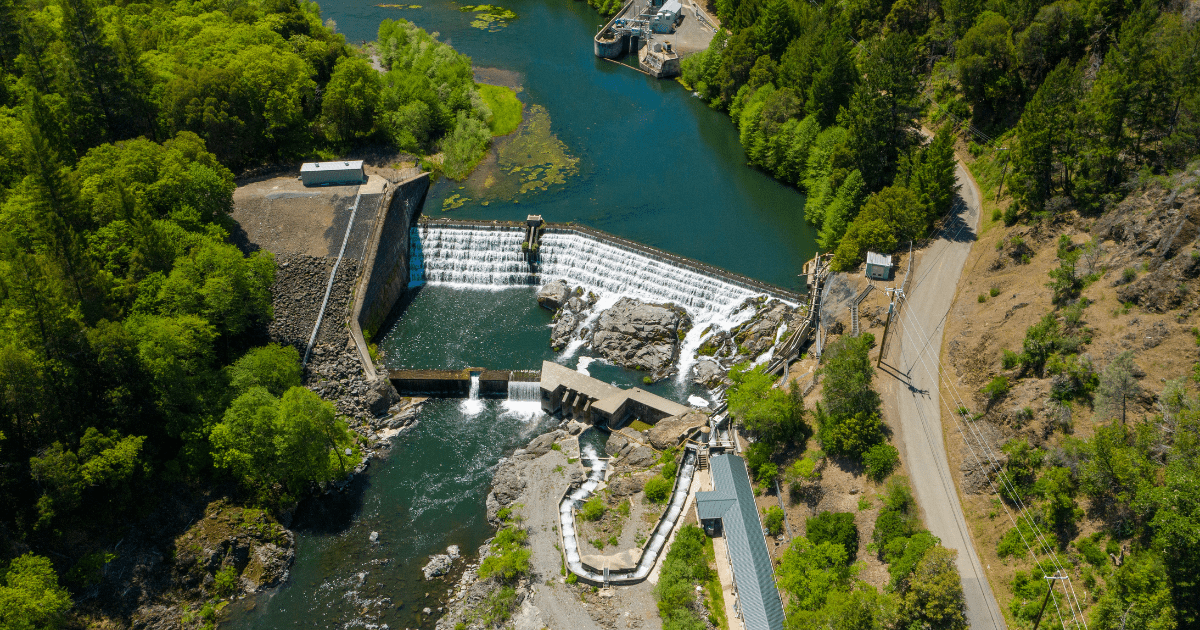Press Release: PG&E’s Refusal to Protect Fish in Eel River


For Immediate Release July 12, 2022
Contacts
California Trout – Redgie Collins – rcollins@caltrout.org, (415) 748-8755
Trout Unlimited – Charlie Schneider – charlie.schneider@tu.org, (707) 217-0409
Fish Conservation Groups Criticize PG&E’s Refusal to Protect Listed Salmon and Steelhead in the Eel River
Utility’s new filings set schedule for decommissioning the Potter Valley Project but refuse to make changes to project’s operations to protect fish in the meantime
Lake County, California – On Monday, July 11th Pacific Gas & Electric Company (PG&E) proposed a schedule for filing a license surrender application and decommissioning plan for the Potter Valley Project. This filing with the Federal Energy Regulatory Commission (FERC) sets the stage for eventual removal of the Project.
Conservation groups working to recover native steelhead and salmon said the filing is an important milestone in the effort to restore the Eel River to a free-flowing state and rebuild its once abundant salmon and steelhead runs. Dam removal would make the Eel California’s longest free flowing river.
In the schedule, PG&E states it will prepare and file a final surrender application and decommissioning plan within 30 months of FERC’s approval of the plan. As soon as six months from approval, the utility will prepare an initial draft surrender application and decommissioning plan for the Project, which includes two Eel River dams, a diversion tunnel that moves water out of the Eel River watershed and into the East Branch of the Russian River, and a powerhouse.
PG&E, in a separate filing on July 12th, responded to a March 17, 2022 letter from the National Marine Fisheries Service (NMFS) citing new evidence that the Project is harming endangered salmon more than previously believed, asking PG&E to re-initiate consultation under the Endangered Species Act (ESA), and to immediately adopt interim measures to limit the damage to fish in the meantime. In this filing, PG&E refuses to re-initiate consultation, claiming it is not necessary and that additional protective measures for fish are not required.
In response to PG&E’s recent filings, California Trout and Trout Unlimited release the following statements:
“PG&E has made it clear they will rid themselves of the 100-year-old Eel River dams, but they seem content to slow-walk the process and continue to kill ESA-listed fish while they take their sweet time,” said Matt Clifford, California Water Attorney with Trout Unlimited. “Yesterday’s filing officially puts PG&E on the path toward decommissioning the Project, but that can’t come soon enough for Eel River salmon and steelhead. These fish need help from PG&E while it still owns the Project so that by the time the dams actually come out there will still be viable populations of native salmonids to rebuild.”
“Extensive scientific research has made clear that the Potter Valley Projects kills federally protected Chinook salmon and steelhead. Dam removal is the only viable path to recovering salmon and steelhead in the upper Eel River,” Clifford added. “It’s alarming that despite this evidence, and a direct request from a federal agency charged with protecting endangered species, PG&E says it will take two years just to come up with a plan to remove their obsolete dams and that in the interim they won’t do anything more to mitigate the harms their project causes.”
“PG&E has been intentionally obstinate thus far in their approach to working with regional stakeholders to resolve the fate of the Potter Valley Project in a way and on a timeline that address the needs of both fish and people,” said Redgie Collins, Legal and Policy Director for CalTrout. “It’s incredible that a major utility company with such a poor public image wouldn’t take advantage of opportunities like this to show they are committed to being a good and responsible corporate citizen. CalTrout will do everything it can to pressure PG&E to do what’s right for the Eel River and its flagging fish populations.”
Studies completed on behalf of a partnership comprising Eel River advocates and Russian River water users have shown that removal of both Scott and Cape Horn dams coupled is feasible and could be completed relatively quickly, restoring access for salmon and steelhead to habitat critical for their recovery.
Collins noted, “The Potter Valley Project will be our nation’s next big dam removal project and is justified both economically and ecologically. Russian River water users must now determine if they want to maintain a diversion, how much they are willing to pay to secure one, and determine how they will pay for it. CalTrout remains committed to helping move forward a surrender plan that represents a compromise between Russian and Eel River interests. If PG&E truly wants to make a positive impact for Californians then we urge them to be fully committed partners on the Eel River rather than simply guilty bystanders.”
####
Cover photo of Cape Horn Dam, part of the Potter Valley Project, by Kyle Schwartz.






3 Comments
I’m glad to hear CalTrout and TU are putting pressure on PG&E, but isn’t this where state and/or federal EPA and Fish & Wildlife should be telling PG&E that they need to comply NOW? Isn’t that one of the reasons we have ESA-listed species?
PG&E has already proven themselves to be corporate scumbags who’s only interest is the almighty dollar and nothing else. They don’t care about people, which has been proven time and time again with no major consequences for the share-holders nor the executives and board members that made the decisions and lead to their repeated refusals to perform required maintenance in order to keep entire towns and its citizens from losing everything possible by being obliterated by PREVENTABLE fires. So their refusal to perform their obligations towards the river and it’s inhabitants–endangered salmon & steelhead, should come as no surprise to anyone. I sincerely hope that you have had attorneys already working on this and they are ready to file injunctions to pay* for this or have other agencies/businesses perform that which is necessary for the P.E.S.S. (People, Eel. Salmon,, Steelhead) and then file liens on their remaining facilities so as to force them to pay for the work they should have performed. They also need to be taken to task by any and all regulatory agencies with punitive damages assessed in amounts that will truly ensure that they do not refuse again! Finally, their executives and board members need to be individually prosecuted for any and all crimes they are committing, no company convictions while the actual perpetrators keep their wealth and stroll free. There absolutely has to be many multiple violations of current law already: due diligence / negligence, perhaps criminal conspiracies, along with vandalism/damaging public lands, flora and fauna along with any environmental harm and destruction, checking if they are violating their recent bankruptcy requirements by this, etcetera… There needs to be accountability or they will never cease such.
Ideally, if they don’t pay for everything that they were obligated–the best case scenario would include to take possession of other dams, which can then also be decommissioned.
I know that PG&E is working to improve its image as a responsible power company. Supporting the rapid removal of dams on the Eel River to improve the wildlife in that river would show that you are one of the industries that care. Please don’t miss this opportunity.
Jack I